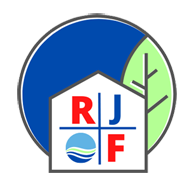Moisture problems in your home or work place can be caused by a variety of conditions, including roof and plumbing leaks, condensation, and excess humidity. To reduce utility bills many homes & buildings are tightly sealed, howeverthat may not allow moisture to escape easily.
RJF is asked often how can I prevent mold? Take these steps to prevent mold growth in your home.
Reduce Indoor Humidity
- Vent showers and other moisture-generating sources to the outside.
- Control humidity levels and dampness by using air conditioners and de-humidifiers.
- Provide adequate ventilation to maintain indoor humidity levels between 30-60%.
- Use exhaust fans whenever cooking, dishwashing, and cleaning in food service areas.
Respond promptly when you see signs of moisture and/or mold, or when leaks or spills occur
- Clean and dry any damp or wet building materials and furnishings within 24-48 hours of occurrence to prevent mold growth.
- Fix the source of the water problem or leak to prevent mold growth.
- Clean mold off hard surfaces with water and detergent, and dry completely.
- Absorbent materials such as ceiling tiles, that are moldy, may need to be replaced.
- Check the mechanical room and roof for unsanitary conditions, leaks, or spills.
Prevent moisture condensation
- Reduce the potential for condensation on cold surfaces (i.e., windows, piping, exterior walls, roof, or floors) by adding insulation.
Floor and carpet cleaning
- Remove spots and stains immediately, using the flooring manufacturer’s recommended techniques.
- Use care to prevent excess moisture or cleaning residue accumulation and ensure that cleaned areas are dried quickly.
- In areas where there is a perpetual moisture problem, do not install carpeting.

